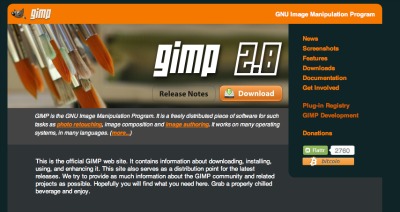Free resources for nonprofit image editing [review]
When a brand becomes a verb, it is generally an indication that it has become an industry leader. Adobe Photoshop certainly holds that distinction, as “photoshopping” has become synonymous with image editing.
However, for small nonprofits with tight budgets, what if you can’t afford to invest in Photoshop? Though TechSoup Canada offers the full CS6 Design and Web Premium for an administrative fee of $165 (a significant reduction from the $2,500 regular price), it still may present a financial barrier.
Photography and images are important to include in your mix of online marketing and communications, so if Photoshop is beyond your organization’s budget, I’ve compiled a roundup of some simple tools to help your organization get the job done.
Photo editing in the browser
As browser technology continues to improve, it has allowed organizations to develop more interesting web applications that allow individuals to accomplish tasks previously limited to desktop applications.
In 2006, Picnik.com launched as a free service to allow people to edit their photos directly in their browser. The AJAX interface was unique at the time, because prior to this, there were not many simple tools that made it easy to edit photos online.
PicMonkey (free, with premium options)
Since Google acquired Picnik in 2010, a free alternative that has emerged as a good replacement is PicMonkey. This service allows a variety of edits to your pictures, including crop, rotate, exposure adjustment, resizing, and sharpen. There are also other features that allow you to overlay text on the image as well as adding special effects. I like to use PicMonkey when I have a quick image I need to crop or resize. It also has an intuitive interface and I often recommend this to colleagues who need to make simple edits.
There is a premium version of PicMonkey available that provides advertisement-free editing, as well as access to textures and additional effects.
Clipping Magic (free)
Clipping Magic, a website that is in alpha testing, allows you to quickly and easily remove image backgrounds. It is a straightforward service and works quite well for simple photographs. Clipping Magic has saved me quite a bit of time during infrequent occasions that I need to remove backgrounds.
Vector Magic (free for two images)
Vector Magic is another great resource if you need to convert images to scalable vector art, such as .eps .svg .pdf so that you can resize your images without compromising the resolution. This can be especially handy when you have graphics that you need to resize for posters and don’t have access to a high-resolution original. Vector Magic does require a basic understanding of how scalable vector art works in order to customize the output, but the learning curve is not too steep.
Photoshop Express (free)
For those of you looking for more functionality, Adobe’s own offering of Photoshop Express seems to match Picnik in its functionality and seems to be optimized for photo editing, featuring basic features such as cropping, resizing, exposure and white balance adjustments and red-eye correction. Though Photoshop Express has many great features, I prefer PicMonkey for its ease of use.
Pixlr Editor (free)
If you are looking for an online tool that closely replicates what you would find in Photoshop, Pixlr is a great resource that replicates the functionality of the desktop Photoshop experience. It allows you to crop, clone, mask, and work with multiple layers. Pixlr is a great for people who have used Photoshop in the past and are looking for similar functionality in a browser environment. If you have not used Photoshop before, the learning curve on Pixlr can be quite steep. However, Pixlr also offers Pixlr Express which is very similar to PicMonkey and Photoshop Express.
GIMP (free)
Though this is primarily a roundup of online tools, I would be remiss if I didn’t mention GIMP, which is a free open-source image editing tool. GIMP has a steep learning curve, even for those who are familiar with Photoshop. However, the most significant benefit of GIMP is that it’s free and if you’re willing to take the time to learn the software, the majority of tasks that you can do in Photoshop can also be done in GIMP.
Looking ahead
For your day-to-day basic image editing needs, the sites listed above should suffice, though it is helpful to keep in mind that Photoshop remains the tool of choice for graphic design professionals. If you are looking to build the long-term capacity of your organization it may be worth budgeting for a discounted version of Photoshop for your staff members to use.
Many of the websites that allow individuals to edit images online have emerged in the past 6-7 years and looking ahead, it is likely that we will see online video editing becoming more commonplace. As internet speeds and processing power increase, I expect that online video editing will become as ubiquitous as online photo editing.



 PRINT
PRINT






